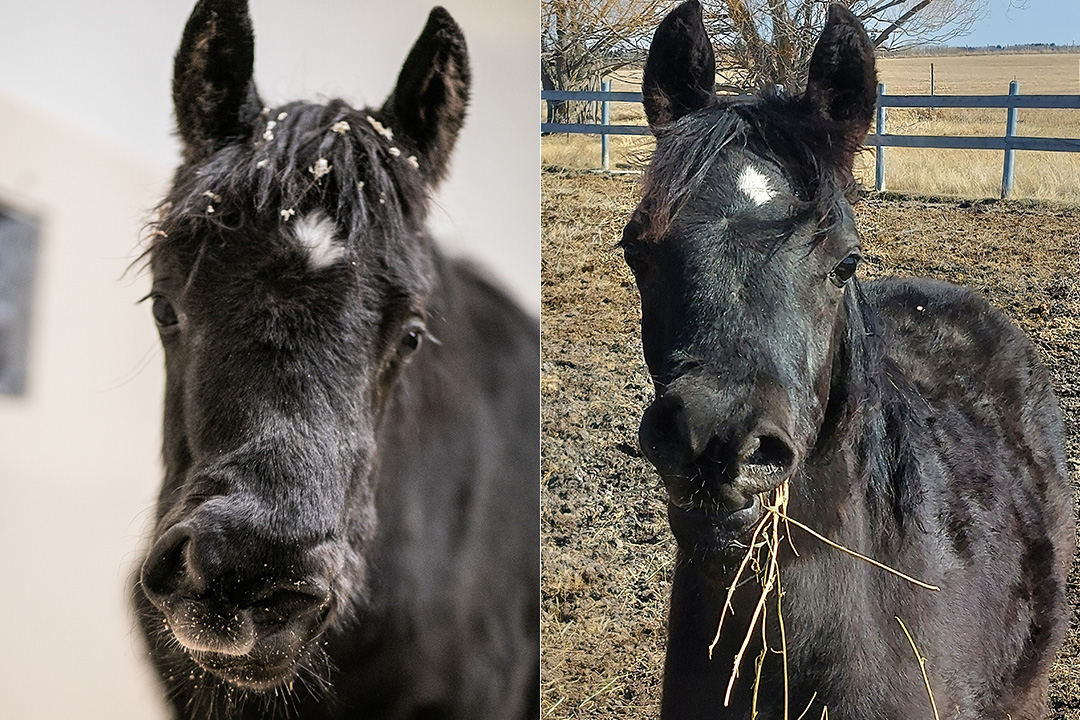
USask veterinarians successfully perform surgery on filly with ‘wry nose’
On the morning of June 30, 2022, Scot Gannon went out to the barn on his farm, Nejd Arabians, just west of Edmonton, Alta. He was happy to see that one of his Arabian mares, Nejds’ Bint Sabbah, had given birth overnight to a black filly.
By Jessica Colby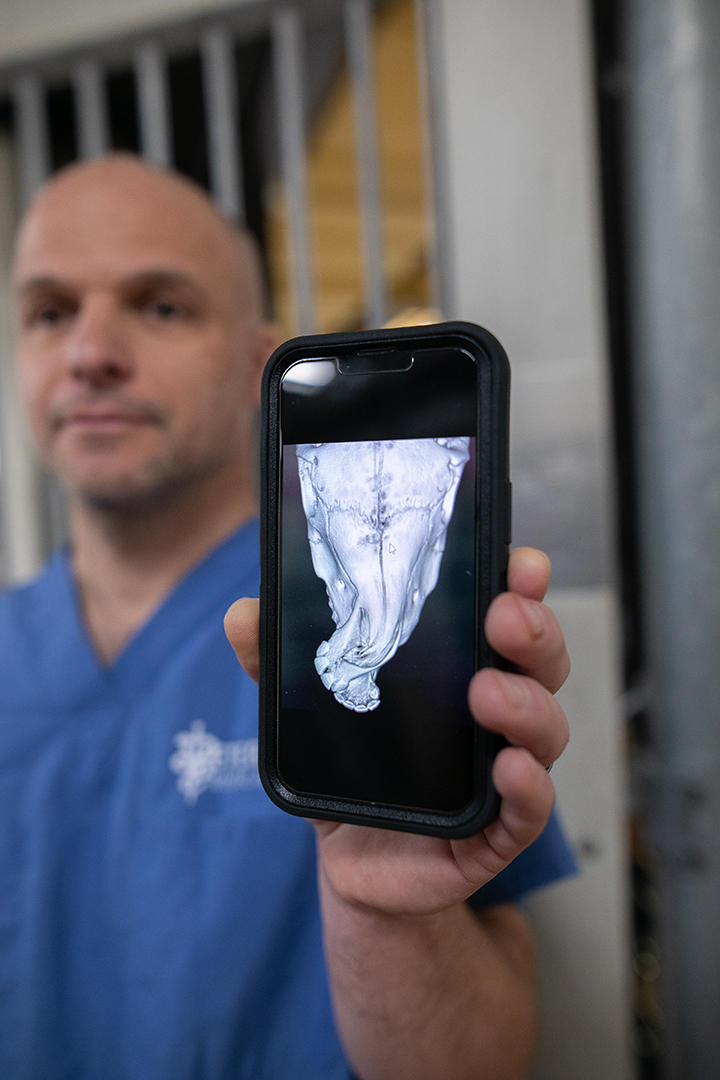
But Gannon’s delight quickly turned to dismay.
“I got around to the front of her, and I saw her nose and I just felt extreme pity because I just thought there’s no way she’s going to live,” says Gannon.
The new filly had been born with a fairly rare condition called wry nose, a deformity that causes a horse’s upper jaw to be bent to one side. It can interfere with an affected foal’s daily life, causing problems with breathing, nursing and grazing. Some cases can even be so severe that a foal with wry nose may only have one functioning nostril.
Gannon’s young filly — Nejds’ Dahmah Fabbah or "Fabbah" for short — had a very severe deformity: her nose and upper jaw were deviated to the right side, leaving her top and bottom teeth misaligned. As a result, Fabbah could only nurse from one of her mother’s teats, which often went dry long before Fabbah was done nursing.
Gannon bottle fed Fabbah for the first two and a half months of her life, feeding her every four hours since she was so young and because her dam often became frustrated with her foal and wouldn’t allow her to nurse. Fabbah eventually grew big enough to reach her mother’s teats across to the other side or through the mare’s back legs.
“As she was growing, I thought there’s no way that she can or should be able to graze,” says Gannon, who began searching for avenues to address Fabbah’s wry nose. After inquiring at veterinary clinics in Edmonton and Calgary, Gannon contacted the Western College of Veterinary Medicine’s (WCVM) Veterinary Medical Centre (VMC) to see if equine specialists would be willing to conduct the wry nose correction surgery.
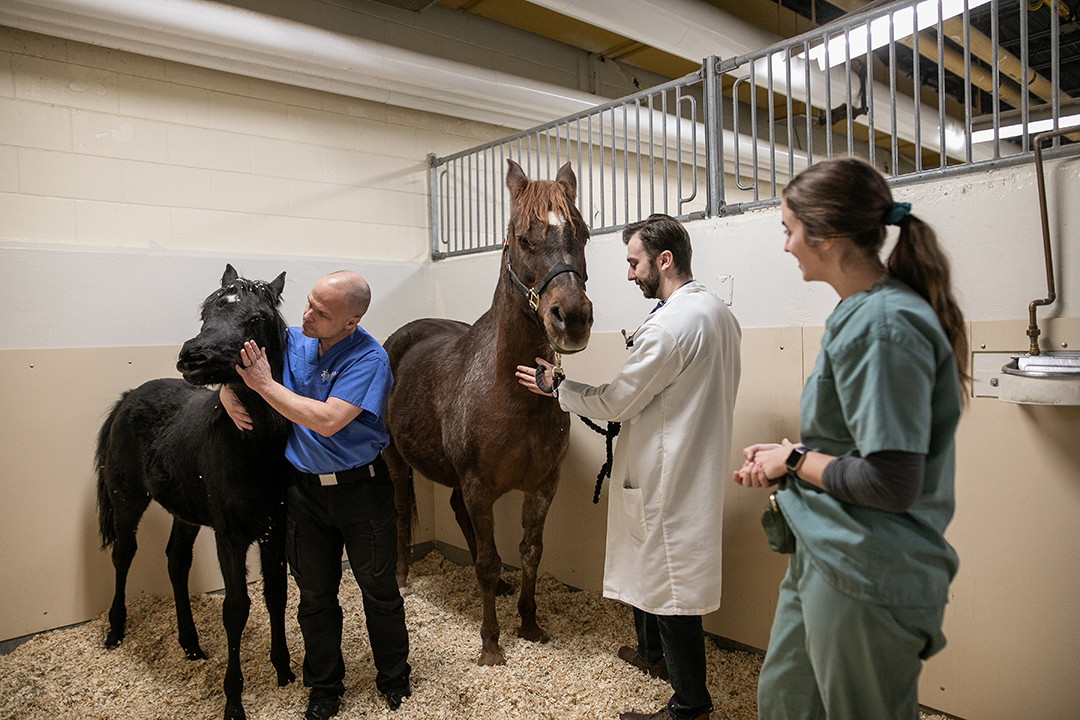
Dr. James Carmalt, a WCVM professor and equine surgical specialist, responded to Gannon’s request within a day and asked for photos of the filly. In late 2022, Gannon brought the filly and her mother to the VMC in Saskatoon, Sask., for a full physical exam and three-dimensional computed tomography (CT) imaging.
While Carmalt considered Fabbah’s case as severe, he was still hopeful that surgery could fix the deformity. VMC surgeons had successfully performed the surgery on a previous case of wry nose, so the college’s team was willing to try.
They also had some expert help. Dr. Jim Schumacher, a professor at the University of Tennessee’s College of Veterinary Medicine, is a veterinary surgeon who is internationally known for his expertise in fixing wry noses. Over his lengthy career, he has performed 30 wry nose correction surgeries and has published case reports about the condition.
“He knows exactly which order to do the procedure in — how aggressive you have to be,” says Carmalt.
Dr. Antonio Guerra, a large animal surgical resident at the WCVM, has known Schumacher since 2009 when they met at the Universidad Nacional Autónoma de Mexico in Mexico City. When Fabbah’s case was first presented at the WCVM, Guerra sent the filly’s CT scans to Schumacher to get ideas of a possible surgical approach.
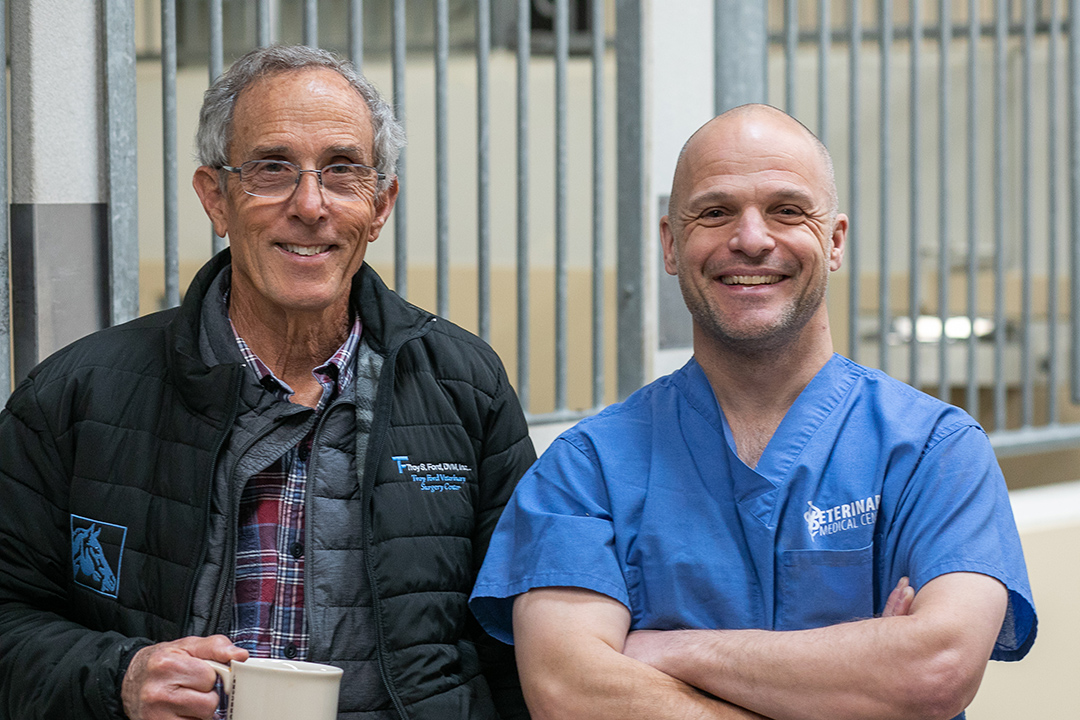
As they corresponded back and forth, the idea of Schumacher visiting Saskatoon to assist in Fabbah’s surgery developed.
“He is the surgeon with the most experience on this continent for managing these types of cases,” says Guerra. “He also travels around the world to universities and private hospitals to treat foals affected with this condition. He is the one to go and ask for help.”
In early February, Gannon brought his mare and foal back to the VMC for the surgery, which took place on Feb. 10. During the three-and-a-half-hour procedure, the first surgical team removed Fabbah’s nasal septum, which was responsible for nearly closing off one of the filly’s nostrils. The surgeons pulled her nose straight and fixed it into position with pins and a rib graft that was retrieved by a second surgical team led by WCVM equine surgical specialist Dr. Joe Bracamonte. Throughout the challenging surgery, the WCVM's anesthesia team monitored the anesthetized filly's vital signs and provided her with comprehensive care.
“Now the nose is straight, she’s going to have an increased ability to breathe, which means she’s going to probably have a better life than she would have [without surgery],” says Carmalt.
Now nine months old, Fabbah is recovering at Gannon’s farm.
“She’s actually doing really well,” says Gannon, who regularly washed Fabbah’s incisions, provided her with special feed as she healed and sought treatment for the filly when she developed an infection.
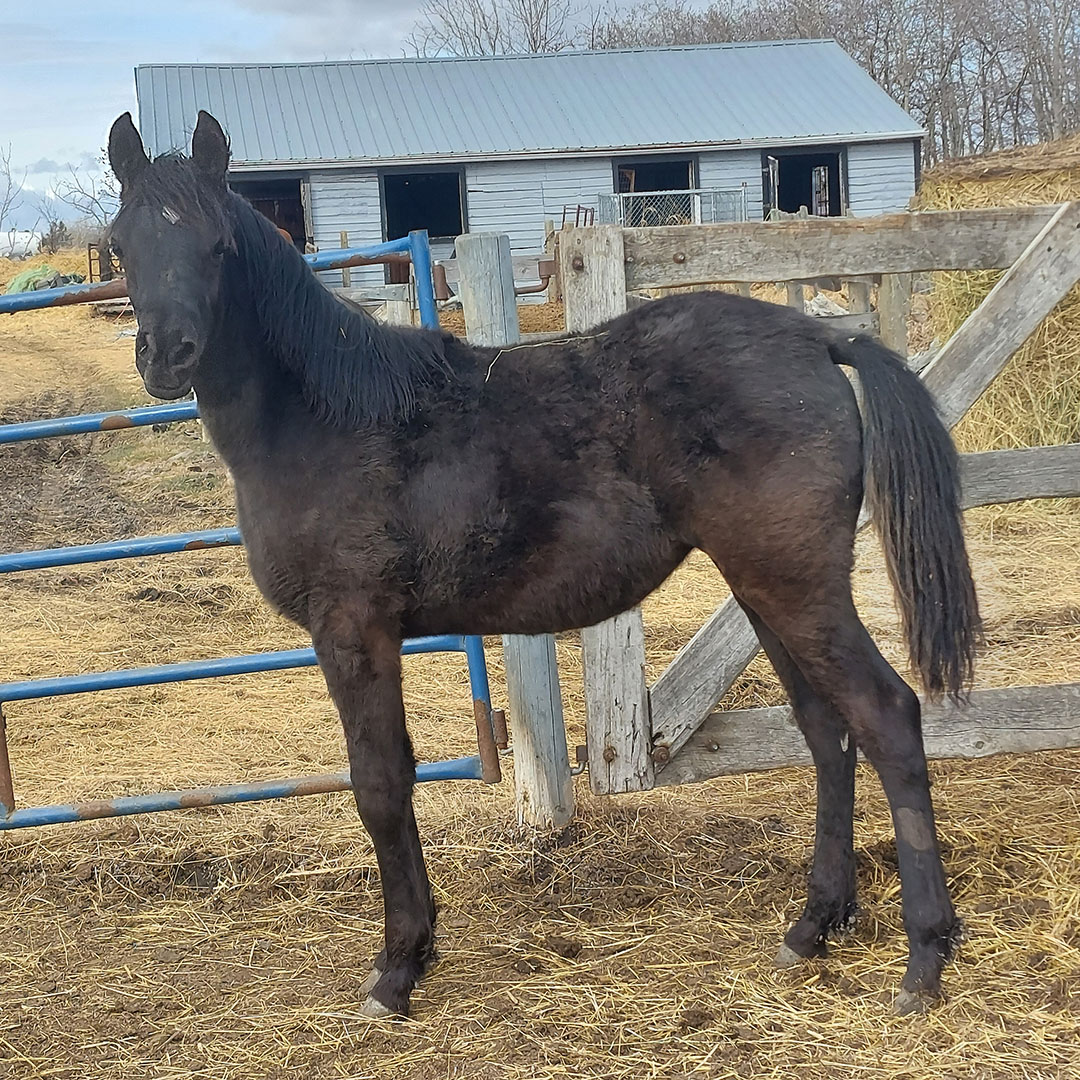
The mare and foal stayed at the VMC in Saskatoon for about two weeks over two different visits. Gannon appreciates the veterinary teaching hospital’s staff members who cared for Fabbah during her stay, and he thanks all of the board-certified surgeons and anesthesiologists, registered veterinary technologists, support staff and students who were involved in the complex surgery.
“James [Carmalt] has been wonderful to work with. It was obvious to me that the people who worked with her [Fabbah] were really kind to her,” says Gannon.
“It’s been a real positive experience to the point that I would advocate it to anyone and everyone that if they’ve got a wry nose horse [and] if they can afford it, they go to the university.”
